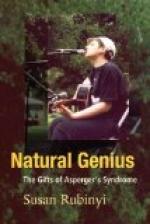After church, my friend the stationer walked with me on the moors. Charlotte Bronte’s experience of the world was so very limited, that in drawing the characters in her novels, she had to select the real, living people in the vicinity. Thus, my friend pointed out one house and another to me as being the residence of many of the originals of many of the characters in her works, especially in “Shirley.” Soon, however, our path across the moors took us out of human habitations, and among the moorland solitudes the Bronte sisters so fondly loved. Cold and desolate as they appear from a distance, a nearer examination proves them to be replete with exquisite beauty. Delicate heather-blooms carpet the immense slope, and bend like nodding plumes, in graceful waves, to the breezes that play heedlessly down the hill-side. Gay yellow buttercups, bright purple heath-flowers, and dark bilberries, vary the general violet tint, while the tiny stems of these gentle plants spring from rich tufts of emerald moss, and are pushed aside by the spray-like leaves of the wild fern. The hum of bees imparts a half busy, half drowsy sound to the scene, while far down the long easy slopes are little valleys, through which trickle talkative brooks, that sometimes peep between the low foliage on their margins, and are the next moment lost to sight behind the crowding bushes. It is no wonder that Charlotte and her sisters loved their quiet walks along the moors.
The next day I bade farewell to Haworth. It is now frequently included in the route of American tourists, by many of whom the memory of Charlotte Bronte is as fondly cherished as by her own countrymen and women; and Haworth is no longer the quiet, unknown Yorkshire hamlet that it was a few years ago.
THORWALDSEN’S CHRIST.
BY THE REV. E.A. WASHBURN.
Silent stood the youthful
sculptor
Gazing on the breathing stone
From the chaos of the marble
Into godlike being grown.
But a gloom was on his forehead,
In his eye a drooping glance,
And at length the heavy sorrow
From the lip found utterance:
“Holy Art! thy shapes
of beauty
Have I carved, but ne’er
before
Reached my thought a faultless
image,
Still unbodied would it soar;
Still the pure unfound Ideal
Would ensoul a fairer shrine;
In my victory I perish,
And no loftier aim is mine.”
Noble artist! thine the yearning,
Thine the great inspiring
word,
By the sleepless mind forever
In its silent watches heard;
For the earthly it is pleasure
Only earthly ends to gain;
For the seeker of the perfect,
To be satisfied is pain.
Visions of an untold glory
Milton saw in his eclipse,
Paradise to outward gazers
Lost, with no apocalypse;
Holier Christ and veiled Madonnas,
Painted were on Raphael’s
soul;
Melodies he could not utter
O’er Bethoven’s
ear would roll.




